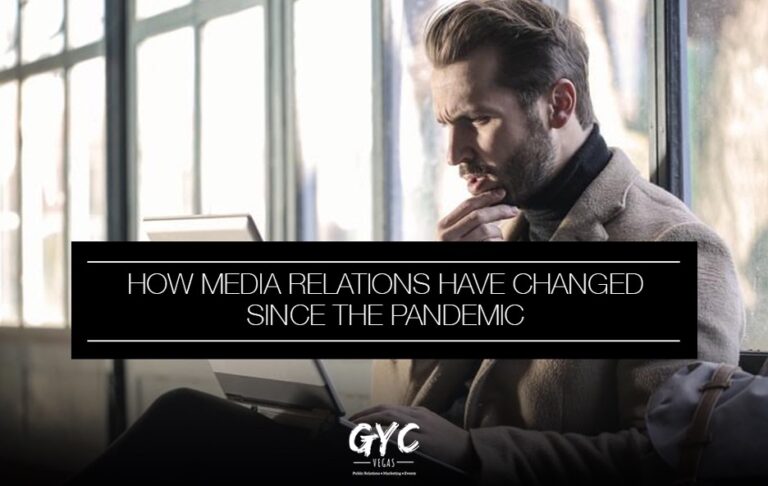The pandemic has changed the landscape of public relations. Gone are the days when we could simply send out press releases and wait for a story to run. Today, media relations is about building relationships with journalists that lead to earning stories all year long.
In this post, we’ll provide you with tips on pitching to journalists, what they are looking for, and how to grow your relationships with them to be mutually beneficial.
Pitching Tactics

With the world changing due to the COVID-19 pandemic, something as easy as pitching to journalists has changed from what it was 16 months ago.
One change is that phone pitching is starting to disappear. Now yes, while some may think phone pitching was already obsolete, there were still a few journalists who valued the follow-up call. However, the coronavirus forcing journalists to work from home indefinitely with no office line and limited forwarding options makes it increasingly difficult to get in touch with them. While some may have forwarding options, they are few and far between.
So pitching to journalists has become something you mostly conduct through email now. And if you’re reaching out via email, you’ll need to know how to pitch to cut through the clutter, which can be very hard to do. First, you should make sure what you’re pitching is actual news and not promotion-laden material. Journalists are professionals, just like you, and they’ll see right through this.
Second, make sure the pitch is short and skimmable because 94% of journalists want something that is two to three short paragraphs, maximum. If you can cut it down to two or three sentences, that would be even better. A difficult task indeed, especially if you have big news to share or if what you’re pitching is highly technical in nature. Because journalists operate under tight deadlines, a short, skimmable email makes it more likely they’ll pay attention to it.
What Journalists are Looking For

Journalists have never been more pressured to find news and publish it quickly. Thus, journalists aren’t necessarily spending time with longer articles anymore. How do you stay ahead of this ‘news cycle’? The key is staying in contact with your leadership early on, preferably Monday at 9 AM (the latest, the earlier, the better). That way, they can help provide timely quotes for hot topics that will likely be trending during the week. This may sound like a lot, but if you’re interested in earning breakthrough stories for your business, then these steps will keep you one step ahead!
And while COVID-19 may have impacted ad sales, it was a boon for subscription newsletters. During the pandemic, many laid-off journalists turned to Substack to supplement their income. This resulted in Substack doubling its user base.
You may be wondering: does this affect media relations? Well, yes, it does. Newsletters actually allow for two things. The first is reaching a more targeted audience. The second is increased amplification. Either way, for you, targeting newsletters for coverage should be a win-win situation.
Growing Relationships

The easiest way to grow relationships with people is to see them as humans first and a vehicle to get your client’s needs met second. A crisis does have a way of reminding us of our shared humanity, so it pays to invest in your media relationships.
And this doesn’t have to be complicated. For example, if you’re a fan of a particular journalist’s work, or found one of their articles particularly insightful, make sure you tell them. You wouldn’t want your friends to call you only when they need something, so treat your journalists with the same level of respect.
Remember: media relations is a powerful tool. With thoughtful outreach, you can help journalists and their readers with valuable information that otherwise wouldn’t be available to the public. This includes assisting journalists by providing resources or other helpful information, like quotes from experts in your field that are not already published elsewhere.
It also means sharing new research findings on timely topics to keep reporters engaged, so you always have someone interested in hearing what you’re saying about an issue of importance. Media relations have real value – even more than people realize until we see how much time goes into news gathering every day!
Conclusion
The world has changed dramatically since the pandemic. Media relations have shifted as well, and it is important to keep up with these changes to make sure that you are pitching your story in a way that will be interesting for journalists.
If you want help figuring out what angle might work best for your media pitch, contact us at GYC Vegas. We’re experts on how public relations should take place after the pandemic, and we can give you tips or provide services to get the recognition you deserve!


One Response